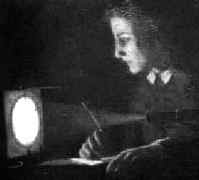Person: Horrocks, Jeremiah

Jeremiah Horrocks was an English astronomer who improved Kepler's tables and worked on the lunar theory.
Mathematical Profile (Excerpt):
- We know nothing of Horrocks' early education, but we do know that he entered Emmanuel College, Cambridge, on 11 May 1632.
- Although no record of Horrocks' university education exists, we know that at this time all students studied a set course which covered classical languages, literature, and divinity.
- Since Horrocks left Cambridge with a deep knowledge of the latest ideas in astronomy due to Copernicus and Kepler, as well as the expertise in mathematics to further develop their ideas, this tells us that he studied mathematics and astronomy in his own time.
- Soon after his return to Lancashire, Horrocks began a scientific correspondence with William Crabtree a merchant in Broughton, near Manchester.
- Chapman suggests that John Worthington of Manchester, who had been an undergraduate at Cambridge at the same time as Horrocks, probably introduced Horrocks and Crabtree.
- By 8 June 1639 Horrocks was in the village of Much Hoole, near Preston, since we have copies of correspondence he wrote from that village.
- In 1635 Horrocks began to use Lansberge's tables to compute planetary positions and to compare the answers with his own observations.
- Horrocks then proposed that the planets had a tendency to fall towards the sun.
- Now with his greater understanding, Horrocks set to work improving Kepler's tables.
- Horrocks, after correcting Kepler's tables realised that a transit of Venus would occur on 24 November 1639, and that it would be visible from England.
- Horrocks purchased a simple telescope which he set up to project an image of the sun onto a graduated circle six inches in diameter.
- Horrocks was able to make some deductions from his observations which gave greatly improved data.
- Although he had only been able to make three observations of the transit from the same site, Horrocks was able to compute the distance of the earth to the sun far more accurately than any previously found.
- The last letter we have from Horrocks written in Much Hoole was on 20 April 1640.
- Although he is best known for his observations of the transit of Venus in 1639, Horrocks' most important work was his lunar theory.
- Horrocks' lunar theory was used for around 100 years, a remarkable achievement.
- From the late 1650's until their eventual publication, Horrocks' manuscripts were widely circulated.
Born 1618, Toxteth, Liverpool, England. Died 3 January 1641, Toxteth, Liverpool, England.
View full biography at MacTutor
Tags relevant for this person:
Astronomy, Origin England
Thank you to the contributors under CC BY-SA 4.0! 

- Github:
-

- non-Github:
- @J-J-O'Connor
- @E-F-Robertson
References
Adapted from other CC BY-SA 4.0 Sources:
- O’Connor, John J; Robertson, Edmund F: MacTutor History of Mathematics Archive
